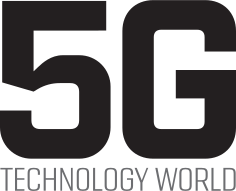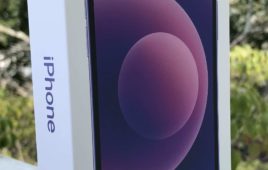Instead of mimicking Verizon Wireless’ “Can You Hear Me Now?,” all U.S. wireless carriers’ subscribers might want to start asking, “Can You See Me Now?”
No one said E911 was going to be easy. More than a decade after the FCC first mandated E911 for wireless, the industry is still wrangling over it.
When E911 fails to deliver – and it’s not clear how often that happens – the problem typically comes when someone calls 911 from a mobile phone and he or she are in the mountains or somewhere with no identifiable landmarks, or are unable to speak due to whatever time-sensitive crisis they’re experiencing and can’t tell the operator their location. GPS doesn’t work well indoors or in urban canyons where buildings can block the view from the satellite, and network-based solutions aren’t flawless in rural areas where fewer cell sites exist.
HISTORY
Last Sept. 11, the FCC issued an order saying that wireless carriers must meet E911 Phase II location accuracy requirements at the Public Safety Answering Point (PSAP) level in five years. Historically, carriers could report on the accuracy of their E911 systems based on a wider geography, like statewide, rather than having to get so specific as to the PSAP level. Public safety, of course, gets more value out of reporting that’s done on a more local level where the calls are made.
Carriers fought the order, including the process that led up to it, and the order was stayed this past March. Last month, public safety groups changed their tune a little bit. The Association of Public-Safety Officials-International (APCO) and the National Emergency Number Association (NENA) told the FCC that despite its previous advocacy for the PSAP-level compliance, they’re OK with measurements taken at the county-wide level. That’s in part because some communities are consolidating 911 centers and others are changing PSAP geographic boundaries to match county boundaries. Counties, they said, also reflect a more stable geographic area for reporting purposes.
While the move surely would lessen the burden on carriers, CTIA didn’t have an immediate comment on the proposal. AT&T responded with a short statement: “AT&T places the highest priority on the safety of our customers,” a company spokesperson relayed. “We are working actively with the public safety community and other stakeholders on our shared goal of improving E911 location accuracy.”
KEEPING UP THE TALKS
Like AT&T, other carriers and public safety officials are continuing their discussions. An estimated 50% of 911 calls today come from wireless phones. “Rightly or wrongly, they expect the call taker knows where they are,” said Steve Wisely, technical services manager at APCO who previously was in charge of a 911 center in Syracuse, N.Y. The problem is exacerbated as more people ditch their landlines and rely solely on their wireless phones for communications. A caller in the middle of a city could be anywhere within a 3-block radius, but they can still be hard to find and law enforcement typically doesn’t have the resources to send a small army every time to look for them.
 |
| Feuerstein: Advocates a hybrid solution. |
Polaris is one of the vendors taking the position that dramatic improvements are possible with a hybrid solution. Where GPS doesn’t work, “that’s where we work best,” said Chief Technology Officer Marty Feuerstein. “We haven’t said hybrid will solve all those fringe issues, but in the urban areas, that’s where the most people are.” Polaris’ solution is software-only and doesn’t require new hardware.
No technology is perfect yet, but another hybrid technology vendor, TruePosition, believes its solution can do a much better job than what currently exists, according to Mike Amarosa, senior vice president of public affairs at TruePosition who also was responsible for the design of New York City’s E911 system when he was with the New York Police Department. TruePosition’s hybrid solution marries the best of GPS and the best of network-based solutions, he said.
Another E911 solutions provider, Andrew, a division of CommScope, didn’t want to elaborate publicly about its stance on E911 beyond what it has already filed with the FCC. “We recognize the complexity and difficulty of providing enhanced E911 coverage to wireless users, and the burdens it may place on operators,” the company said in a statement. “Andrew agrees with many commenters to the FCC’s recent Notice of Proposed Rulemaking that cooperation and input among all interested parties is necessary in order to realize truly advanced wireless E911 capabilities.”
TeleCommunication Systems (TCS) handles nearly half of the E911 calls in the United States, so it is talking to carriers and the public safety community about ways it could help the situation, taking advantage of the fact data flows through its system. “Everyone is trying to do the right thing,” said Tim Lorello, chief marketing officer at TCS.
The tangle between wireless operators, public safety and the FCC doesn’t directly involve commercial LBS providers, but they see long-term effects. Ultimately, they see a trend toward better reporting and accuracy.
 |
Analysts at Frost & Sullivan believe carriers will need to use hybrid solutions that combine the handset-based GPS or A-GPS solutions used most often by CDMA carriers and the network-based solutions that are more common among the GSM-based carriers.
The additional cost attached with a hybrid solution becomes justified when you consider the pay-off that comes in the form of commercialized LBS services, said Brent Iadarola, global research director/mobile and wireless at Frost & Sullivan. Navigation, for one, is seeing a lot of traction and he estimates it generates ARPU of $6 to $10 per month per subscriber. Greater accuracy for LBS could be used as a first-mover advantage for carriers that want to tout it, he said. Frost & Sullivan projects annual U.S. LBS revenues to reach $3.5 billion by 2013.
UIEvolution is not directly involved in the FCC proceedings, but it has been watching them. The software vendor is working with the auto industry to get wireless applications deployed into cars of the future. “I think in addition to pushing standards, it will provide more confidence for the consumer,” said Travis Beaven, vice president of consumer products at UIEvolution. “You’re going to see more consumer trust and thus, more consumer adoption.”




